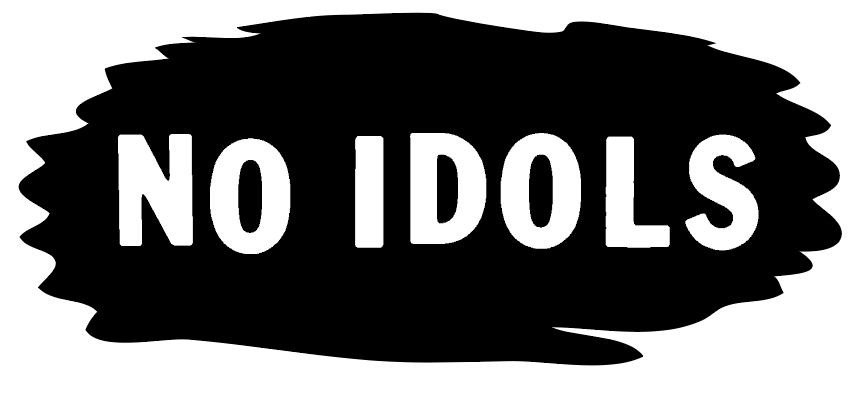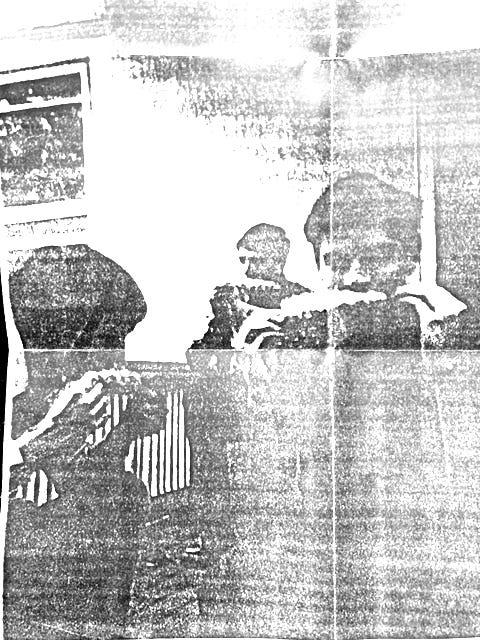For this portion of my conversation with Avalon Kalin, we talk about the broken blast beat of California, his second band Patterns Make Sunrise, and the origins of his present-day solo work.
Avalon Kalin: I wanted to talk about the emo blast beat, which is like a broken blast beat. Do you know what I’m talking about?
Tony Rettman: Are you talking about the rat-a-tat-tat beat? I’m thinking of what Aaron played in Heroin or the drummer from Mohinder.
AK: Yeah, that’s it. So what’s interesting is that beat was played by many bands, Christopher Robin included, but once that West Coast hardcore scene disappeared, that version of the blast beat went with it. If readers want to hear it, I’d say it appeared for the first time on the Heroin 12” on song number two (“A Portion”). Why I call it a broken blast beat is the kick is used for accent, which makes it almost like a funky beat. You hear it again on the second side of the record on the second to last song (“Moving Parts”). It’s almost like Cumbia in how it breaks up that Hardcore polka beat. It’s fascinating from an academic point of view because I started studying art later and began to wonder about my scene and what made it different. It’s really distinct from a musicological perspective and that’s what makes it interesting. I guess it’s what people later called Screamo, but I don’t know if that applies. It was an amped-up marriage of emo-core and hardcore. Along with the quiet-loud thing, It was something else in the arsenal of these bands at the time.
TR: Crossed Out was from San Diego. Maybe they influenced that style?
AV: That could explain it because the first time I heard it was on the Heroin 12”. Aaron would have been exposed to Crossed Out for sure, right? Or it could be Aaron invented it?
Patterns Make Sunrise. Photo courtesy of Avalon Kalin
TR: I would think Aaron was aware of Crossed Out since Matt Anderson played bass in the band for a short time. Let’s get into the start of your next band, Patterns Make Sunrise.
AV: Patterns Make Sunrise formed because there was this local, mutant post-punk band we loved called Lunch Pail that broke up. They were weird with these cool, screaming lyrics over circular riffs. When they broke up, my friend Jordan Rain was playing rolling kind of drum beats, and he began jamming with their bassist Graeme Nelson. The guitarist from Lunch Pail also joined them and added a lot of color and drama, which is a killer way for a guitarist to act because most of them don’t want to do that. The idiosyncratic and weird mutations that come from writing music with self-taught musicians like my bandmates in Patterns Make Sunrise is that it makes unexpected hybrids that are similar to Evergreen or Lync. That’s one of the things I’m proud of with Patterns Make Sunrise, my bandmates. The lyrics all came from a ‘zine I was writing, stream-of-consciousness stuff. Some people are gonna call me pretentious for doing a zine, well fine I’m pretentious! It’s been really hard to listen to that record again because it’s hard to hear my own voice. Vulnerability is part of the style, I guess. You used to be able to blackmail me with it! (Laughs) But now I think the music is killer and I love listening to it. I look back at that band now and I have more awareness of where I was coming from. People have called us “Midwest Emo” even though we were from the Pacific Northwest. I guess that was the sound of Midwest Emo later on.
TR: Do you have any theory on why younger people are currently discovering and digging Patterns Make Sunrise and other obscure bands of the 90s?
AV: It seems like chance when bands like Heroin or Unwound come along with good chemistry and a certain amount of depth. So I feel that’s the reason people are going back to them or discovering them for the first time. I got deeper into punk since first discovering it and got into records on Factory and Rough Trade and proto-punk like The Stooges which led to Avant-Garde music and Jazz. I like getting deeper into the cultures layered underneath what I first came across. You listen to a band like This Heat from the U.K. and you understand more about the music that came out of Chicago for years.
TR: Due to the interest in this 90s stuff being mostly young people who didn’t live it, they’re handpicking what’s important to them simply for their own reasons, whatever they may be. They don’t have the baggage of an old fart like me. But I also know the record collector mentality of championing the more obscure band because there are only 300 copies of their record.
AK: Not all obscure music is good. You can be obscure because you’re not good. Or, you can be obscure because you’re a little far out there. I’d like to think Patterns was a little out there. Our artwork choices were left field and the feel of the sound was earthier than a lot of bands. We were coming from an intuitive place that is hard to come by for a lot of people.
TR: Would you like to shift the conversation to the music you do currently?
AK: Well, it’s kinda full circle. I can tie the period we’ve been talking about to my recent stuff. Both with Group Material, and I've been collaborating for the last several years with Mike Pearsall, I don’t know if you remember him.
TR: I remember his label, Slave Cut.
AK: He’s a good friend of mine, who went on to be a graphic designer. He started the Man With Gun record label back then and put out Cap’n Jazz. He and I have been making long-form experimental, meditative stuff. That’s another full-circle thing that’s happened lately. I’m kind of superstitious and look at numerology and I feel like the tribe is returning all these years later. Even me and you are talking from parallel universes. We probably met in 1994. My record that came out last year, Intimations from Group Material, my collaborator Eric Sanchez came from Hardcore and holds all the same ethos from back then to let the cards fall where they may and do the best we can, from the music to the artwork. We’ve been creating from that ethos of experimentation and it’s been really awesome to see good work come from that.





That "broken blast beat" is what we refer to as the "scissor beat" in our bizzaro world.
It's basically just a cheat fast beat. Hi-hat/kick on the 1; snare on the 2. It's been done since the Negative FX demo in 1982 and also notably by Siege, Straight Ahead, and Infest. All those would've predated Crossed Out or Heroin.
I think it feels a little different with Heroin because they're bouncing back and forth from fast to scissor while maintaining the same beat, opposed to always going to a tempo change off of the scissor like most bands who are using it as their only fast beat.
Cool interview - it's fun to see this stuff get hashed out.